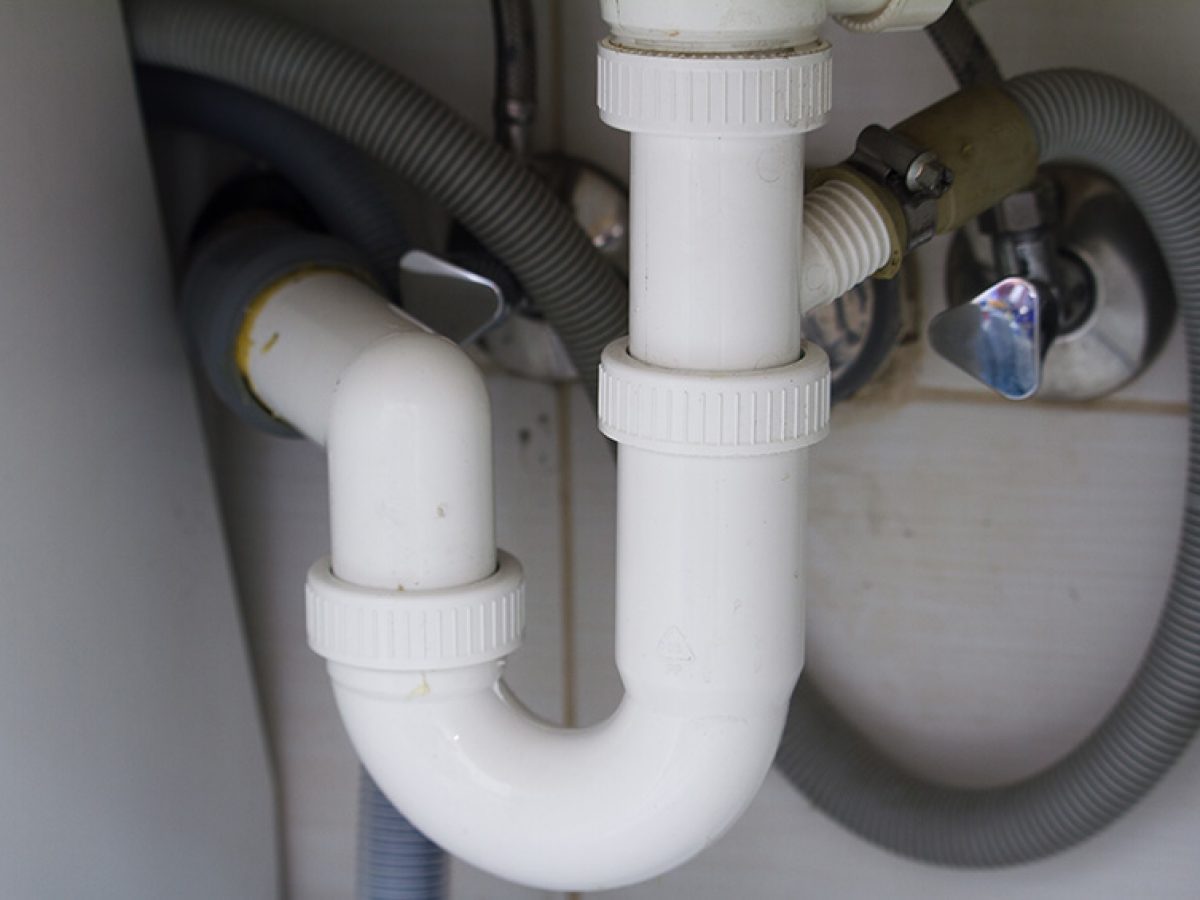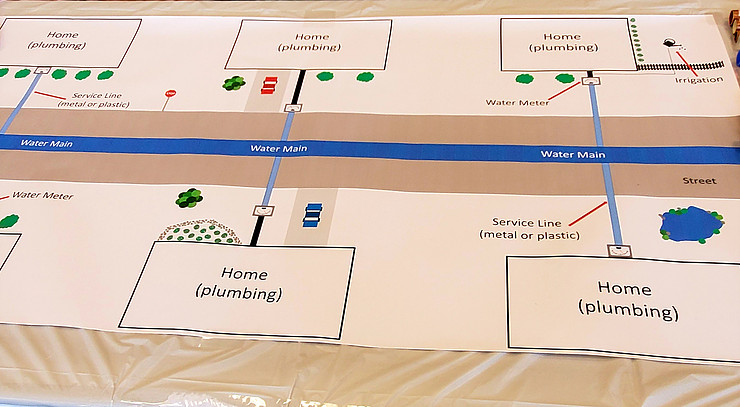The Basics to Your Home's Plumbing System Anatomy
The Basics to Your Home's Plumbing System Anatomy
Blog Article
We have unearthed this post pertaining to Plumbing Installation 101: All You Need to Know down the page on the net and accepted it made perfect sense to write about it with you here.

Understanding exactly how your home's pipes system works is necessary for each homeowner. From delivering clean water for drinking, food preparation, and showering to securely removing wastewater, a well-kept plumbing system is essential for your household's wellness and convenience. In this comprehensive guide, we'll check out the elaborate network that comprises your home's plumbing and deal suggestions on upkeep, upgrades, and taking care of usual concerns.
Intro
Your home's pipes system is greater than just a network of pipes; it's a complicated system that guarantees you have accessibility to tidy water and reliable wastewater elimination. Knowing its parts and just how they interact can help you protect against pricey repairs and guarantee everything runs efficiently.
Fundamental Parts of a Pipes System
Pipes and Tubes
At the heart of your plumbing system are the pipes and tubing that carry water throughout your home. These can be made from different materials such as copper, PVC, or PEX, each with its benefits in regards to resilience and cost-effectiveness.
Components: Sinks, Toilets, Showers, and so on.
Components like sinks, commodes, showers, and bathtubs are where water is used in your home. Recognizing exactly how these components connect to the plumbing system aids in diagnosing issues and intending upgrades.
Valves and Shut-off Factors
Shutoffs manage the circulation of water in your pipes system. Shut-off shutoffs are crucial during emergencies or when you require to make fixings, permitting you to isolate parts of the system without disrupting water flow to the whole home.
Water System
Main Water Line
The main water line attaches your home to the community water supply or a private well. It's where water enters your home and is distributed to different components.
Water Meter and Stress Regulatory Authority
The water meter procedures your water use, while a pressure regulator ensures that water moves at a risk-free pressure throughout your home's plumbing system, preventing damage to pipelines and components.
Cold Water vs. Hot Water Lines
Comprehending the distinction in between cold water lines, which supply water directly from the major, and warm water lines, which bring heated water from the water heater, aids in fixing and planning for upgrades.
Water drainage System
Drain Water Lines and Traps
Drain pipes lug wastewater away from sinks, showers, and toilets to the drain or septic tank. Catches stop sewer gases from entering your home and additionally trap debris that can cause obstructions.
Ventilation Pipelines
Ventilation pipes permit air right into the drainage system, stopping suction that could slow down drainage and create traps to vacant. Proper air flow is necessary for keeping the stability of your pipes system.
Importance of Correct Water Drainage
Guaranteeing proper water drainage avoids back-ups and water damage. Consistently cleaning up drains pipes and preserving catches can stop pricey repair work and expand the life of your plumbing system.
Water Heating System
Types of Water Heaters
Hot water heater can be tankless or standard tank-style. Tankless heating systems warmth water on demand, while containers store warmed water for immediate use.
How Water Heaters Connect to the Pipes System
Comprehending just how water heaters link to both the cold water supply and warm water circulation lines aids in diagnosing concerns like insufficient hot water or leakages.
Maintenance Tips for Water Heaters
Frequently purging your water heater to get rid of debris, examining the temperature settings, and inspecting for leaks can prolong its life-span and enhance energy performance.
Common Pipes Problems
Leaks and Their Reasons
Leaks can occur as a result of maturing pipelines, loose installations, or high water stress. Resolving leaks immediately prevents water damages and mold and mildew development.
Clogs and Blockages
Clogs in drains and bathrooms are commonly caused by purging non-flushable things or a build-up of oil and hair. Using drain displays and bearing in mind what goes down your drains can stop obstructions.
Signs of Plumbing Troubles to Watch For
Low water pressure, slow-moving drains pipes, foul odors, or unusually high water bills are indications of prospective pipes troubles that must be addressed promptly.
Pipes Maintenance Tips
Routine Examinations and Checks
Set up yearly plumbing evaluations to capture problems early. Try to find indications of leakages, deterioration, or mineral accumulation in taps and showerheads.
Do It Yourself Maintenance Tasks
Easy jobs like cleansing tap aerators, checking for commode leakages using dye tablets, or insulating revealed pipes in cold climates can avoid major plumbing problems.
When to Call a Specialist Plumbing Professional
Know when a pipes concern needs specialist know-how. Trying complicated repair services without correct knowledge can bring about even more damages and greater fixing expenses.
Updating Your Plumbing System
Reasons for Upgrading
Updating to water-efficient fixtures or changing old pipes can enhance water top quality, lower water bills, and enhance the value of your home.
Modern Pipes Technologies and Their Benefits
Explore technologies like wise leakage detectors, water-saving commodes, and energy-efficient hot water heater that can conserve money and decrease ecological influence.
Price Considerations and ROI
Compute the upfront prices versus long-lasting financial savings when considering plumbing upgrades. Numerous upgrades spend for themselves via minimized utility costs and less repairs.
Environmental Effect and Conservation
Water-Saving Fixtures and Home Appliances
Setting up low-flow faucets, showerheads, and bathrooms can substantially minimize water use without giving up efficiency.
Tips for Reducing Water Use
Simple behaviors like repairing leaks immediately, taking shorter showers, and running full loads of washing and recipes can preserve water and reduced your energy costs.
Eco-Friendly Pipes Options
Think about lasting plumbing products like bamboo for floor covering, which is durable and eco-friendly, or recycled glass for counter tops.
Emergency situation Readiness
Steps to Take During a Pipes Emergency situation
Know where your shut-off valves are located and how to switch off the water system in case of a burst pipeline or major leak.
Value of Having Emergency Contacts Useful
Keep call information for neighborhood plumbings or emergency situation services conveniently available for fast response throughout a plumbing dilemma.
DIY Emergency Situation Fixes (When Appropriate).
Momentary solutions like utilizing duct tape to patch a leaking pipeline or placing a pail under a leaking faucet can decrease damages until a professional plumber gets here.
Final thought.
Understanding the makeup of your home's plumbing system empowers you to preserve it effectively, conserving time and money on repairs. By adhering to routine maintenance regimens and staying educated regarding modern pipes innovations, you can guarantee your pipes system operates successfully for years ahead.
HOW YOUR PLUMBING SYSTEM WORKS
Which Pipes Do What?
Blue lines = fresh water supply entering the building
Red lines = hot water supply entering the building
Grey lines = pipes carrying waste away from the building and venting pipes carrying gases away from the building (through the roof)
YOUR MAIN PLUMBING SYSTEMS
There are two main plumbing systems that support your home s basic plumbing needs one that brings clean water into your home, and one that sends dirty water away from your home. Connected to the toilet, bath, shower, and other faucets in your home, these two systems keep your water flowing in the right directions.
ACCESSING FRESH WATER
Fresh and clean water is brought into your home through the main water supply line . Filtered through one pipe, this water is pressured to flow into the various fixtures in your home at any given time.
This water can be sourced from a well located on your property, a pond or river (mostly cottages), or, as in most cases, from the city s municipal water treatment centre. However, it is important to note that water that is untreated, such as the water siphoned from ponds or rivers, may not be safe to drink. Personal water supplies always need to be treated for hardness and contaminants before consumed.
MUNICIPAL WATER SUPPLIES
Improve taste and odour
Remove sediment
Eliminate hardness
Reduce chlorine
COLD WATER SUPPLY VS. HOT WATER SUPPLY
Cold water flows into your home or building through the service line, which then distributes hot or cold water to your fixtures. This line is most commonly run through a central column that runs floor to floor. Hot water runs in short and straight pipes as the longer the pipeline, the more heat that will be lost in the transfer. Having shorter pipes also allows residents to access hot water more quickly.
WASTE WATER SYSTEM
Your wastewater system is divided into two parts pipes that send wastewater away from your home and venting pipes that send sewer gas away from your home. Sewage water travels through pipes that flush the water and waste towards local sewers that are operated and managed by your city or town. Most sewer systems rely on gravity to move the wastewater to where it needs to go.
The further away from your toilet or sink, the larger wastewater pipes become. This allows for waste to be disposed of from various parts of your home or business at once without pipe blockages. The angle and flow of these pipes are also essential for keeping your waste pipes clear of build up.
https://harrisplumbing.ca/how-your-home-plumbing-system-works/

HOW YOUR PLUMBING SYSTEM WORKS
Which Pipes Do What?
YOUR MAIN PLUMBING SYSTEMS
There are two main plumbing systems that support your home s basic plumbing needs one that brings clean water into your home, and one that sends dirty water away from your home. Connected to the toilet, bath, shower, and other faucets in your home, these two systems keep your water flowing in the right directions.
ACCESSING FRESH WATER
Fresh and clean water is brought into your home through the main water supply line . Filtered through one pipe, this water is pressured to flow into the various fixtures in your home at any given time.
This water can be sourced from a well located on your property, a pond or river (mostly cottages), or, as in most cases, from the city s municipal water treatment centre. However, it is important to note that water that is untreated, such as the water siphoned from ponds or rivers, may not be safe to drink. Personal water supplies always need to be treated for hardness and contaminants before consumed.
MUNICIPAL WATER SUPPLIES
COLD WATER SUPPLY VS. HOT WATER SUPPLY
Cold water flows into your home or building through the service line, which then distributes hot or cold water to your fixtures. This line is most commonly run through a central column that runs floor to floor. Hot water runs in short and straight pipes as the longer the pipeline, the more heat that will be lost in the transfer. Having shorter pipes also allows residents to access hot water more quickly.
WASTE WATER SYSTEM
Your wastewater system is divided into two parts pipes that send wastewater away from your home and venting pipes that send sewer gas away from your home. Sewage water travels through pipes that flush the water and waste towards local sewers that are operated and managed by your city or town. Most sewer systems rely on gravity to move the wastewater to where it needs to go.
The further away from your toilet or sink, the larger wastewater pipes become. This allows for waste to be disposed of from various parts of your home or business at once without pipe blockages. The angle and flow of these pipes are also essential for keeping your waste pipes clear of build up.
https://harrisplumbing.ca/how-your-home-plumbing-system-works/
We were shown that report about Anatomy of a House: Understanding the Components through a friend on a different blog. Liked our blog entry? Please share it. Help others check it out. I praise you for being here. Please pay a visit to our website back soon.
Click Here Report this page